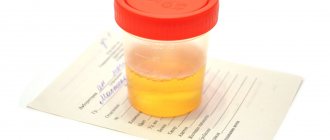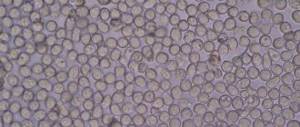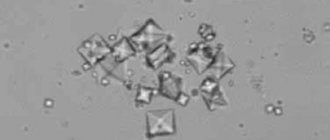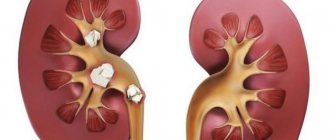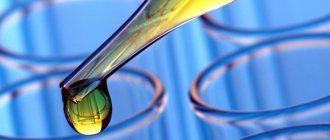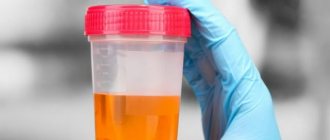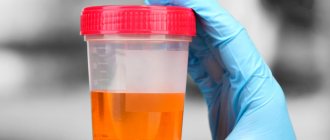The role of ascorbic acid in the body
Ascorbic acid is an essential substance for the functioning of the body, as it takes part in many necessary reactions:
- Stimulates collagen production, formation and restoration of connective and bone tissues
- Promotes the complete absorption of iron, an element responsible for supplying cells with oxygen and hemoglobin levels
- Affects the level of body resistance and the strength of the immune system
- Takes part in the synthesis of steroid hormones, insulin, carbohydrate and amino acid metabolism
- Affects capillary permeability
- Normalizes cholesterol levels.
Being a water-soluble substance, ascorbic acid does not accumulate in the body. The intake and concentration of vitamin C depends entirely on the content in foods, the body’s ability to absorb the substance, and the rate of excretion.
Full instructions for use are available at the link:
Why is it needed?
Ascorbic acid plays a role in the human body:
- Antioxidant. Under the skin, it functions as a protector of organs and the internal environment from free radicals that destroy cells.
- Anti-aging product. Along with other components, vitamin C is involved in the synthesis of collagen, which is necessary to maintain the turgor of human skin and prevent the formation of wrinkles. Collagen also helps maintain the elasticity of the walls of blood vessels in order to avoid bruising and hemorrhages under the skin.
- Immunomodulator. Ascorbic acid promotes the formation of the hormones serotonin and norepinephrine, as well as protein, which is needed to enhance the immune response.
- Body weight controller. Takes part in cholesterol metabolism, prevents the oxidation of hemoglobin, promotes the breakdown of iron for faster absorption.
- Antidepressant. By participating in the biosynthesis of hormones released by the body during stress, the acid prevents their oxidation, thereby freezing neurotic reactions.
Reasons for the high content of ascorbic acid
The content of ascorbic acid in urine is considered normal at 30 mg per day. This value indicates proper metabolism. A slight excess can be observed when taking large doses of ascorbic acid.
Higher levels in urine are recorded if the concentration of the vitamin in the blood reaches more than 100 mg. Such values can be found in healthy people when taking bioactive supplements of complexes with ascorbic acid or medications that enhance the absorption of ascorbic acid: vitamin C itself, taken in large doses, drugs with acetylsalicylic acid, barbiturates, antiepileptic drugs.
In addition, urolithiasis contributes to an increase in the level of ascorbic acid in urine. If the vitamin is supplied in excess, the kidneys work under heavy load. As a result, it settles in the organ and forms stones over time. The presence of kidney stones increases the level of ascorbic acid in the urine.
A high level of ascorbic acid promotes increased synthesis of oxalic acid, which also activates the formation of stones, and, accordingly, an increase in the content of ascorbic acid in urine.
The norm of ascorbic acid in the urine of a child during pregnancy, urine analysis vc
Ascorbic acid is a common component in urine. There are daily norms for its excretion in a healthy person. Therefore, the analysis can quickly reveal changes in the amount of this element in urine. Obvious disturbances in the level of vitamin C indicate various pathologies.
All people should be routinely tested for the presence of vc in a urine test. Patients suffering from kidney disease or recovering from serious illnesses should do it regularly.
There is an established quantitative indicator of the normal content of ask in a urine test, and it is equal to thirty milligrams per liter per day in both men and women.
If the research results correspond to this standard, it is stated that metabolic processes in humans proceed as usual.
Small fluctuations in this indicator are caused by an excess of ascorbic acid tablets taken by the patient or some error in laboratory analysis.
The value of vitamin C
Ascorbic acid is not synthesized by the human body and must be constantly supplied in sufficient quantities from the outside. The value of vc lies in the fact that a number of significant processes cannot do without this element:
- formation of full immunity;
- hematopoiesis;
- skin functioning;
- formation of a number of hormones;
- blood glucose circulation;
- redox reactions;
- liberation of the body from various toxins;
- work of the digestive system;
- full functioning of the liver;
- development of anti-inflammatory reactions;
- countering allergies;
- prevention of scurvy;
- wound healing;
- stabilization of water-salt balance;
- functioning of mucous membranes.
Ascorbic acid is the most important condition for the full functioning of the human body. It prevents various pathologies, is responsible for the production of necessary substances and stabilization of hormonal levels. Metabolism and human health and appearance depend on the presence of this element.
Ascorbic acid is necessarily present in the urine, and its level is almost always unchanged. The main criteria for its content are indicated in the table
Categories of persons Norm per liter (milligrams)
| Adults (men and women) | 30 or 1.2 millimoles |
| During the period of bearing a child | 25-35 |
| Old men | 15-45 |
| Children from one to eighteen years old | 20 |
| Infants up to one month | 15-100 |
Each period of life has its own characteristics of daily intake and excretion of vitamin C. Therefore, its quantitative parameters often fluctuate noticeably.
Ask numbers in urine may deviate significantly from their normal values. Inconsistency is observed both in disease and in functional changes.
Errors and distortions occasionally occur when the analysis results are unreliable and require double-checking. Then it becomes necessary to re-collect urine for research.
High level
Increased values of vitamin C in urine are recorded when its level in the bloodstream exceeds 100 mg. Fluctuations are associated both with temporary changes and with the development of a number of diseases.
High levels of ascorbic acid are observed in the following situations:
- excessive intake of vitamin C;
- treatment with certain drugs;
- metabolic disease;
- development of renal pathologies;
- long-term use of barbiturates;
- overdose of acetylsalicylic acid;
- epilepsy therapy;
- urolithiasis;
- cystitis.
In functional conditions, urine analysis for ascus after some time without any correction returns to normal values, and the patient’s normal level is recorded. If any pathology is present, its treatment is required to stabilize the content of various substances in the blood.
A decrease in the amount of ascorbic acid can mean the development of certain diseases, the most dangerous of which is scurvy. The disease is most often caused by a severe deficiency of vitamin C.
Other main reasons for a decrease in the parameters of a substance are:
- ascariasis;
- impaired absorption of ascorbic acid by the body;
- bacterial infection;
- viruses;
- intoxication;
- malabsorption;
- unbalanced diet;
- burns;
- cancer;
- decrease in protective forces.
Often, changes in vitamin C levels are determined while a woman is waiting for the birth of a child, especially before childbirth. Abuse of its use can also lead to its reactive withdrawal from the bloodstream.
An excess or sharp decrease in the content of ascorbic acid can lead to negative consequences. With its excess, increased growth of epithelial cells, excessive formation of fibrous tissue, and accelerated formation of oxalates or sand in the urinary tract are observed.
The consumption of vitamin C by children has a huge positive effect. If there is insufficient content of it in the body or increased excretion, the child experiences a slowdown in growth and development.
A lack of vitamin C causes significant metabolic disturbances. Therefore, there is often a need to urgently increase the daily vc rate.
Attention! An overdose of ascorbic acid leads to impaired glucose circulation in the body. If the amount of ask becomes more than 50 mg/l (0.3 mmol/l), then the sugar analysis indicators change sharply.
The most commonly used are two main methods for studying the content of ascus in a patient’s urine.
- Using analyzers. The biomaterial is collected in a special way throughout the day into a pharmaceutical plastic container. Then he is taken to the reception point. From there it is sent to the laboratory, where it will be examined using modern reagents on analyzers.
- Test. It is also required to collect urine for twenty-four hours. Indicator strips are then used to determine the amount of ascorbic acid. This method can be used at home.
Urinalysis for ascus content is the most important study. Therefore, it is prescribed for the diagnosis and control of a number of serious diseases:
- suspected development of scurvy;
- frequent respiratory infections;
- recovery after surgery;
- treatment of burns;
- excessive formation of bruises and hematomas on the body at any age;
- multiple formation of petechiae;
- increased bleeding;
- dysfunction of the cardiovascular system;
- adrenal diseases;
- cancer screening;
- prolonged general malaise;
- liver pathologies;
- severe dysfunction of the digestive system;
- cachexia.
Persons recovering from serious illnesses, infectious diseases or injuries are also advised to study the content of ascorbic acid.
Patients who have undergone blood transfusions, chemotherapy sessions or suffer from metabolic disorders should regularly submit urine for this test.
It is often also recommended for women with hormonal imbalances, irregular cycles, and a number of gynecological dysfunctions.
The study must show completely reliable results, therefore, before collecting biomaterial for analysis, a number of mandatory rules must be observed.
It is necessary to completely eliminate the consumption of food containing ascorbic acid the day before.
Oranges, lemons, broccoli, sea buckthorn, peppers, tomatoes, dill, black currants, chicory, rosehip infusion, sorrel, and apples are prohibited.
The day before the test collection, you should stop taking any pharmacological agents, except those approved by your doctor or those that cannot be cancelled. You should completely stop smoking and drinking alcohol while preparing for the study. Women are required to stop taking contraceptives.
Biomaterial for laboratory analysis is collected throughout the day in a special container. Before releasing it, it is necessary to thoroughly clean the genitals. After twenty-four hours, all the urine is thoroughly mixed.
Urine should be used for analysis no later than one hundred and twenty minutes after collection. It is poured into a sterile plastic container and, with the appropriate inscriptions, taken to the collection point.
Laboratory determination of ascorbic acid content in urine is carried out using the Tilsman method. A special substance “2,6 Dichlorophenolidophenol” is used. The biomaterial is diluted with distilled water, then the solution is carefully filtered. Afterwards, a reagent is added to it and the color changes are waited for.
But the express test method is more often used. Special paper strips are produced for it. They are removed from the package and immediately used for research.
The intensity of the color corresponds to the quantitative parameter of the vitamin C content. The result is not based on stating the result using a “positive” or “negative” rating, but on clarifying the volume of the substance content.
Factors reducing the content of ascorbic acid in urine
If a urine test shows a value of less than 30 mg, this indicates that the body is not receiving enough ascorbic acid. Deficiencies may be caused by:
- Unbalanced diet
- Crash diets that contain too few vitamin C foods
- Drinking excessive amounts of alkaline drinks, fruit and vegetable juices, resulting in a decrease in the absorption of ascorbic acid and an increase in its excretion
- Effect of drugs (salicylates, corticosteroids, calcium chloride, quinoline antibiotics).
In addition, indicators below the norm are:
- For scurvy, a disease that develops due to persistent deficiency of ascorbic acid
- During the treatment of burns (vitamin consumption for tissue regeneration increases)
- For malignant neoplasms (tumor growth is due to nutrients, including ascorbic acid)
- During inflammatory and infectious diseases and the recovery period
- With frequent stress, increased mental or physical stress
- In the 3rd trimester of pregnancy, when the fetus is actively growing
- In case of poisoning – when the body fights toxins.
A low level of ascorbic acid in the urine also occurs when its concentration in the blood is normal. In this case, the indicators decrease due to kidney disease, as a result of which they do not process and eliminate the substance well.
Why are the numbers down?
Ascorbic acid in the urine of a child and during pregnancy in women may be slightly reduced. This is a variant of the norm. In childhood, this vitamin is consumed very quickly, as it is necessary for the growing body. During gestation, most of the ascorbic acid is taken up by the developing embryo.
Most often, a decrease in ascorbic acid is associated with a deficiency of this substance in food. Deviations in vitamin C levels in urine are also possible with excessive fluid intake. The results of the analysis may also be affected by taking diuretics. Such causes of vitamin deficiency are easily eliminated.
However, there are also pathological reasons for the decrease in vitamin C in urine:
- Burns. Increased amounts of ascorbic acid are required for skin healing.
- Stress. During strong emotional experiences, the supply of vitamins is intensively consumed.
- Malabsorption. In this case, the absorption of vitamins in the intestines is impaired. Even with a sufficient intake of ascorbic acid from food, a deficiency of nutrients occurs in the body.
- Tumors. In case of cancer, the body experiences an increased consumption of ascorbic acid.
- Liver diseases. In this case, vitamin deficiency is associated with metabolic disorders.
Such pathologies require serious treatment. The levels of ascorbic acid in a child’s urine are normalized only after a course of therapy for the underlying disease.
Who is prescribed the analysis?
Determination of the level of ascorbic acid in urine is prescribed for pregnant women, bottle-fed breastfeeding women, and patients with signs of scurvy. The basis for the referral are:
- Weight loss, loss of appetite
- Bleeding gums
- Susceptibility to colds
- General malaise, weakness, lethargy, drowsiness
- Deterioration of the gastrointestinal tract, heart
- Bruising of the skin
- Minor subcutaneous hemorrhages.
People with burns, oncology, after surgery and infusion therapy, exposure to stress, metabolic disorders, and pathology of the adrenal glands are tested for the content of ascorbic acid in urine. For women, the test is prescribed for ovarian dysfunction.
What to do?
The doctor’s tactics will depend on the test result. For example, if the pediatrician learns about the impact of changes in diet on the eve of the examination or taking any medications, the child will be asked to retest the urine. If there is a slight deviation from the norm, it is often recommended to adjust the diet by including vitamin C-rich foods in the children's diet.
If hypovitaminosis is detected, and the ascorbic acid supplied with food is not enough, the child will be prescribed pharmaceutical supplements with this active element.
At the same time, they focus on age needs. A child under one year old should consume 30 mg of vitamin C, a baby aged 12-24 months should take 40 mg per day, a child from 3 to 12 years old should take 45 mg daily, and a teenager should take at least 60 mg per day.
In case of hypovitaminosis or any diseases in which the need for ascorbic acid increases, children are prescribed increased doses of this vitamin compound. For example, children aged one to three are given 400 mg of vitamin C per day.
You will learn more about ascorbic acid in the following video.
What can affect your urine test?
For analysis, urine collected during the day under normal daily and dietary conditions is submitted to the laboratory. Depending on the results, the doctor will give recommendations for correcting nutrition or prescribe further examination to determine the factors for exceeding the norm of ascorbic acid in urine.
A repeat test to determine the level of ascorbic acid is prescribed if the previous analysis showed normal values, but there are all signs of a deficiency or excess of the substance. This is the result:
- After drinking alcohol, taking medications or contraceptives the day before the test
- In case of improper storage and transportation of biomaterial in a loosely closed container
- For concomitant diseases
- After a heavy intake of foods or dietary supplements with ascorbic acid. You should stop taking them 10 hours before the test.
Reasons for increasing vitamin C
Often children have increased ascorbic acid in the urine. The reason for this is most often poor nutrition. Parents often try too hard to enrich their baby’s diet with vitamins. In this case, the child is often fed citrus fruits, and sometimes additionally given ascorbic acid in tablets. All this leads to hypervitaminosis.
It is important to remember that a child needs from 30 to 75 mg of vitamin C per day (depending on age). A systematic excess of ascorbic acid in food can lead to the formation of stones in the excretory organs and a deficiency of B vitamins. In teenage girls, hypervitaminosis causes hormonal disorders.
However, poor nutrition is not the only cause of deviations from the norm in the analysis. Vitamin C in urine can be increased in case of kidney disease. In this case, the excretory organs cannot cope with the processing of ascorbic acid, and this substance leaves the body in increased quantities.
Research methods
The simplest method currently used in medicine is to determine the level of vitamin C in urine using test strips. This method is highly sensitive. Depending on the amount of ascorbic acid in the urine, the test strip changes color. Depending on the dough manufacturer, colors may vary. However, in all cases, if a change in the original color occurs, this indicates a change in the concentration of vitamin C.
If ascorbic acid is normal in a urine test, but there are all the symptoms of its deficiency or excess in the body, it is necessary to repeat the test, since certain factors could influence the result of the study:
- Bad human habits. If a person smoked or drank alcohol during the day before taking the test, the result will be false. Drugs such as barbiturates also affect the results.
- Violation of the rules for transporting collected material. If the temperature outside is below zero, and the urine was not transferred in a tightly closed jar, weather conditions affect its composition and change the result.
- In women, a false result may be a consequence of taking hormonal contraceptives.
- Some comorbidities may lead to a false result.
- Industrial hazards (working with heavy metals - lead, or with chemicals - benzene). Therefore, two days before the test, you need to take a day off.
These test strips are also sold in all pharmacies. Anyone who is interested in knowing the amount of ascorbic acid in urine can buy them and test themselves.
Determination methods
Currently, modern medicine offers a fairly simple way to determine the level of concentration of ascorbic acid in a biological fluid. For this, special test strips are used, and the method itself is considered highly effective. Depending on how high or low the vitamin C content is, the color of the band will change.
Color variations on test strips for the determination of ascorbic acid in urine. Source: myshared.ru
It is worth understanding that there are a number of certain factors that may affect the result of such a study. Therefore, if the substances in the body are normal, but there are signs of deficiency, before the test you need to stop drinking alcohol, and women should not take hormonal contraceptives. It is necessary to correctly collect biological material, and when working in hazardous industries, you need to take a day off 2 days before the study.
Main goals
Ascorbic acid is a non-synthesized substance that enters the human body with food and water. You can also get an additional portion of the vitamin from appropriate medications. Ascorbic acid takes part in important biological and metabolic processes that occur daily in the human body. Therefore, it is important to control its content in the urine.
Being a powerful antioxidant, vitamin C performs the following tasks:
- converts harmful cholesterol into bile acids, prevents the formation of plaques in the circulatory system;
- stabilizes the functioning of the endocrine system, forms the correct hormonal balance;
- absorbs iron, which helps prevent anemia;
- regulates redox reactions;
- promotes the regeneration of damaged cells of the mucous membrane and epidermis;
- tones the walls of blood vessels and capillaries, preventing their premature destruction;
- increases the body's resistance to external antigens;
- organizes proper collagen synthesis, which strengthens the integrity of connective tissues.
With a deficiency or excess of ascorbic acid, disturbances occur in the body, which over time begin to manifest pronounced symptoms.
Norms
The norm of ascorbic acid in urine is 30 mg. This amount of an important element is released in urine during the day. At the same time, conventional general analysis is not able to show reliable results. To perform the study, you will need a daily portion of urine.
When interpreting OAM results, it is necessary to pay attention to the acceptable reference values. These may vary for each laboratory. If testing is performed at home, it is important to follow the instructions for using the test system. Decoding the obtained result is carried out by comparing the color range of norms and deviations with the obtained shades.
To obtain normal values of ascorbic acid in a urine test, an adult must consume from 70 to 100 mg of this substance per day.
Indications for diagnosis
Ascorbic acid in urine should be periodically monitored by everyone. It is especially important to monitor these indicators in women during pregnancy and subsequent breastfeeding. A deficiency, like an excess of the vitamin, can negatively affect the baby’s health. A urine test for ascorbic acid is taken from a child several times during the first year of his life. It is especially important to conduct such studies for breastfed infants.
Indications for diagnostics in children and adult patients are the following conditions:
- the formation of bruises and causeless bruises on the skin;
- frequent nosebleeds;
- venous insufficiency;
- increased bleeding of the gums, caused by mechanical stress or spontaneous;
- decreased performance;
- depressed mood, drowsiness;
- weight loss;
- loss of appetite;
- regular colds and infectious diseases;
- exacerbation of chronic pathologies;
- dysfunction of the digestive tract;
- disruption of the heart muscle;
- malignant tumors;
- infertility, menstrual irregularities in women;
- extensive injuries, skin burns.
